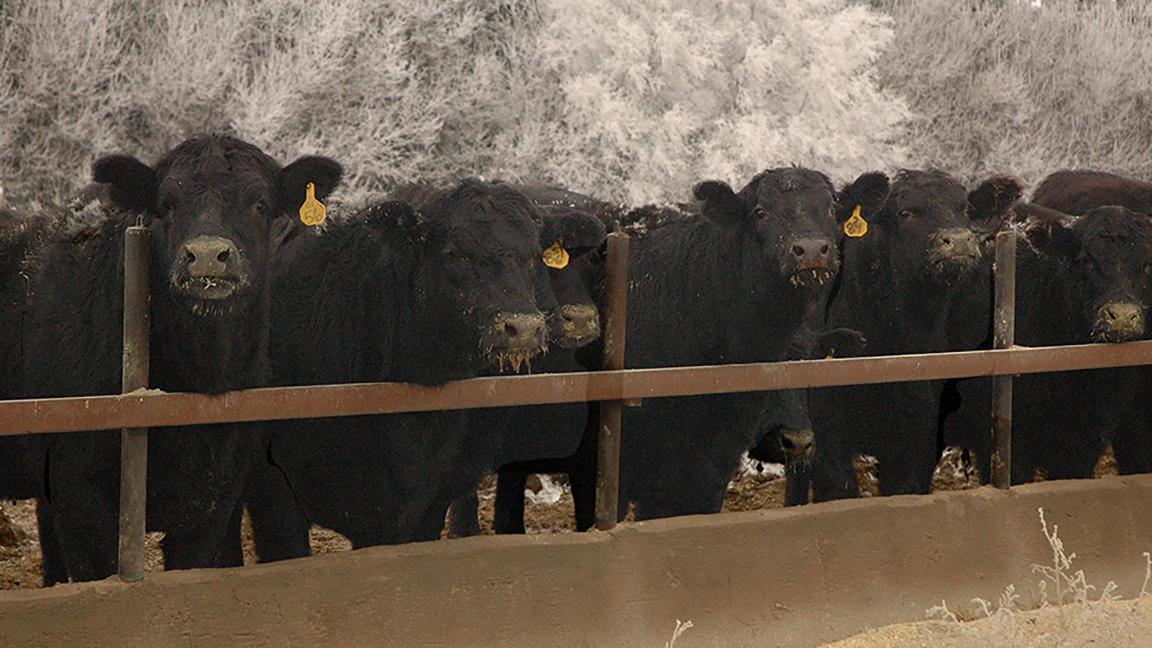Weather Weighs In
Carcass weights to fall; quality to remain.
January 25, 2024

The onset of severe cold temperatures and snow accumulation in a broad spectrum of cattle feeding regions will pull fed-cattle production down. Beyond the reduced weekly slaughter head counts, carcass weights are set to plunge. Since the all-time record-high carcass weights were recently recorded in late December, there is certainly some flex in the production system as far as boxed pounds of product per head.
From a cattle feeder’s perspective, that conversation is void since feed efficiency and daily gains have been slashed dramatically through the frigid cold of early January. Pen conditions will erode in the future as temperatures warm up, adding to cattle performance declines.
Fig. 1 details fed-cattle carcass weights for the past two years. The 2023 weight trend started with the first four months trailing 2022 by an average of 16 pounds (lb.) per carcass. That winter’s storms and brutal temperatures are still fresh in our minds with the duration of poor conditions measured in months, not weeks. Although this season’s weather effect is not yet two weeks underway, a similar pattern in decreased cattle performance will come through in the carcass weight data very soon. Formula steer weights were down 5 lb. Monday, Jan. 15, as the weather shift was initially developing. That was the tip of the iceberg.
Effects on carcass quality
Shifting focus from carcass weight to carcass quality, the outlook remains positive through the first quarter. We’ve detailed previously in the CAB Insider that extreme cold temperatures haven’t historically had a negative effect on marbling scores. In fact, the trend is just the opposite, as improved national average carcass quality, in terms of percent USDA Choice and Prime and percent CAB acceptance, is often noted during these weather conditions.
Increased potential carcass quality is one of the only benefits of a polar vortex event for cattle feeders.
Increased potential carcass quality is one of the only benefits of a polar vortex event for cattle feeders. Feedyards may see more of their Angus-type cattle qualifying for the Certified Angus Beef® brand than would have been achieved under conditions favoring heavier carcass weights.
Since marbling scores below Modest00 (the minimum requirement for Premium Choice) are the primary reason carcasses are not certified for the brand, marbling improvement is key to capturing more CAB carcasses and premiums. But lighter average carcass weights (primarily in big steers) pull the percentage of carcasses exceeding the brand’s 1,100-lb. maximum lower than otherwise might have been realized in ideal feeding performance conditions, increasing the pen’s percent CAB acceptance.
Lighter weights also mean fewer ribeyes exceeding the brand’s traditional 16-square-inch (in.) maximum and those measuring more than the 1-square-in. upper limit for backfat.
Editor’s note: Paul Dykstra is director of supply management and analysis for Certified Angus Beef. This article is reprinted with permission from the Jan. 17, 2024, CAB Insider e-newsletter. Subscribe at https://bit.ly/CABinsider. [Lead photo by Miranda Reiman.]

Topics: Marketing
Publication: Angus Beef Bulletin


